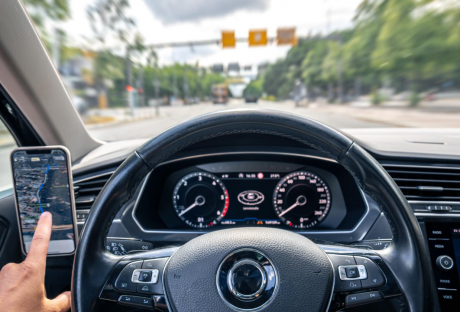Today’s topic: How to install metal roofing?
If you’ve been thinking about upgrading your roof without tearing everything off first, you’re not alone. One of the most common questions I hear as a roofer is: “Can you put a metal roof over shingles?” The answer is yes—you can, and when it’s done right, it can save you time, money, and a whole lot of mess.
I’ve spent years working on both residential and commercial roofing projects, and I can tell you there’s a right way and a wrong way to tackle this job. Let me guide you through the process step by step, with a few pro tips and common mistakes to avoid along the way.
Why Should You Consider Installing Metal Roofing Over Shingles?
Metal roofs have gained significant popularity over the past decade, and for good reason. They’re durable, energy-efficient, and they look sharp on just about any home or building. By installing metal roofing over shingles, you:
- Save on tear-off costs (no dumpster rentals or labor for removing shingles).
- Add an extra layer of insulation, which can help with energy efficiency.
- Reduce installation time, since you’re working over an existing roof deck.
That said, this method isn’t right for every roof. Before you start, it’s essential to ensure that your roof structure can handle the added weight and that your local building codes permit this type of installation. Additionally, you may want to consider checking out Cleveland roofing companies, thanks to their reputation and expertise, especially if you are located in the United States.
How To Install Metal Roofing Over Shingles?
So, without wasting time, let’s find out how you can install metal roofing over shingles.
Step 1: Inspect Your Roof Before Doing Anything
Here’s the truth: the success of your metal roofing project depends on the prep work. Before laying down panels, conduct a thorough inspection.
- Inspect the decking for signs of rot or soft spots. If your roof sheathing is compromised, it needs to be replaced.
- Look for more than two layers of shingles. Most codes don’t allow more than two layers total.
- Check flashing, chimneys, and vents for proper installation. Any existing leaks must be repaired before the new roof is installed.
Pro Tip: Walk the roof carefully. If you feel any spongy areas underfoot, you have decking issues that must be addressed first.
Step 2: Lay Down A Moisture Barrier
Although shingles already provide some protection, you’ll want to add a layer of underlayment before installing metal panels. This extra layer protects against condensation that can form under the metal.
I usually recommend using a high-quality synthetic underlayment. It’s lightweight, tear-resistant, and holds up better in the long run compared to traditional felt paper.
Step 3: As An Optional Step, Add Furring Strips
This is one of those “pro versus DIY” differences. Many homeowners skip this step, but furring strips (also called purlins) create a flat, even surface for the metal panels to sit on. They also improve ventilation, which helps reduce moisture buildup under the roof.
- Install the strips vertically, spacing them every 2 feet or so.
- Make sure they’re fastened securely into the rafters, not just the shingles.
Pro Tip: Furring strips are especially important if your shingles are uneven or curling. Without them, your new metal roof could end up looking wavy.
Step 4: Choose The Right Metal Panels
Not all metal roofing is created equal. The most common options are:
- Corrugated panels: Budget-friendly and great for sheds or garages.
- Standing seam panels: Sleek look, hidden fasteners, and very durable—perfect for homes and commercial buildings.
- Metal shingles or tiles: Designed to mimic traditional roofing but with the strength of metal.
Your choice ultimately depends on your budget, style preferences, and the desired lifespan of the roof. Personally, I recommend standing seam if you’re planning to stay in your home for the long haul.
Step 5: Install The Metal Roofing Panels
Now comes the main event. Installing metal roofing over shingles isn’t overly complicated, but it does take precision.
- Start at the bottom edge (eaves) and work upward.
- Lay the first panel square with the edge of the roof. If your first panel is crooked, the entire roof will appear uneven.
- Overlap panels properly—follow the manufacturer’s guidelines for overlap distance.
- Fasten with the right screws. Use screws with rubber washers to seal holes, ensuring they penetrate solid decking or furring strips.
- Continue up the roof, checking alignment every few rows.
Pro Tip: Don’t overtighten screws. If the rubber washer is squished too flat, it won’t seal properly and may crack over time.
Step 6: Flashing And Trim Work
This is where many DIY jobs go awry. Flashing around chimneys, skylights, and valleys is critical for keeping water out. Trim pieces at the ridges and edges give the roof a finished, professional look.
If you’re unsure about flashing details, this is the step where you may want to consider hiring a professional. A metal roof is only as good as its weakest point, and improper flashing is the most common cause of leaks.
What Are The Common Mistakes To Avoid?
I’ve seen many metal roofs fail due to simple errors. Here are the top mistakes to watch out for:
- Skipping the underlayment. This leaves your roof vulnerable to condensation.
- Using the wrong fasteners. Nails or cheap screws won’t hold up—always use roofing screws with rubber washers.
- Poor alignment. Once panels are on, it’s tough to fix crooked lines. Take your time.
- Ignoring ventilation. Without proper airflow, you risk moisture damage and reduced lifespan of your roof.
How To Maintain Metal Roofs? Tips
Now that you know how to install metal roofing, the next issue is: how to maintain it? One of the perks of a metal roof is its low maintenance, but that doesn’t mean zero maintenance is required.
- Inspect screws and fasteners yearly. Tighten or replace any that have loosened.
- Keep gutters clean. This prevents water from backing up and damaging flashing.
- Trim overhanging branches. Metal roofs are tough, but falling limbs can still cause dents or scratches.
- Wash occasionally. A simple rinse with a hose keeps the roof looking sharp and removes debris.
Know How To Install Metal Roofing In 2025!
If you’re handy and comfortable working on a roof, installing metal over shingles is a doable task. But here’s my honest advice: it’s not for everyone. Working on a roof is inherently dangerous, and even a minor mistake can result in significant financial consequences down the road.
As a roofer, I’ve fixed plenty of DIY jobs that started with good intentions but ended up leaking or looking crooked. If you’re unsure about any part of the process—especially flashing and sealing—don’t be afraid to call in an expert.
Installing metal roofing over shingles can be a smart move if it’s done right. You’ll save money, boost curb appeal, and enjoy a roof that could last 40–50 years.
If you’re ready to take the next step, don’t hesitate to reach out to a professional roofer. Whether you just need advice, an inspection, or a full installation, we’re here to help. After all, a roof isn’t something you want to gamble on—it’s what keeps your family, your business, and everything inside safe and dry.
Read More:






















